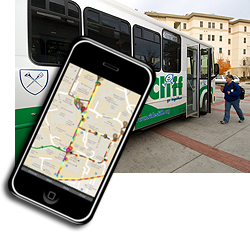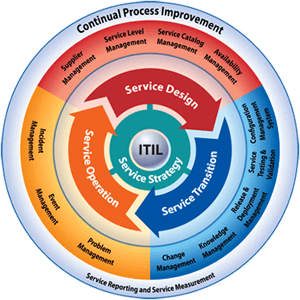University Technology Services


Brett Coryell is entering his fifth year as Deputy Chief Information Officer for Emory's University Technology Services. His primary specialization remains making IT operations more efficient through improved project and service management. This year, he looks forward to helping UTS become much more active in supporting the academic mission of the institution.
In the midst of a division-wide focus on providing expert collaboration on the One IT initiative, University Technology Services also completed a stellar year of innovation and implementation. With over 300 employees, it is impossible to list all of the accomplishments throughout UTS, so listed below are a handful of milestones we are proud to have reached in FY11.
Exchange Upgrade
Over the course of the last year, the Exchange 2010 Project Team upgraded Emory's existing Exchange Email System to Exchange 2010. This upgrade allowed us to expand the capacity of our service and provide requested features to our customers. These new features include expanding the mail quota from 500 mb to 10 gb, reducing the dependence on archiving by increasing the archiving footprint from 13 months to 4 years and adding new features to Outlook Web Access (OWA), such as full clients for Firefox and Safari and shared calendars.
We increased the size of our user base from 24,000 to over 38,000 accounts and with the new architecture will be able to expand higher as needed. UTS now has new disaster recovery and business continuity capabilities with our expanded architecture at our White Street secondary data center facility.
Even more exciting was that the project team brought this project in early and under budget. Their excellent work and commitment to the system design, architecture, and especially the new HP Storage system that was purchased specifically for this project, helped to make this project a huge success.
 Blackboard OPUS Project
Blackboard OPUS Project
Prior to May 9, 2011, a faculty member requesting a course site in Blackboard for making online class content available to their students had to fill out and submit an online request form. Up to 1,200 of these course requests were processed by one or two UTS Blackboard administrators at the beginning of every semester, a manual process that had been in place since UTS first implemented the learning management system in 2000. During peak periods, it could take up to 2 business days to processes everything.
In mid-2010 the Blackboard-OPUS integration project was approved to address automation of Blackboard course creation and enrollment through the use of an Enterprise Service Bus (ESB) middleware architecture. ESB is a technology layer which relays course and enrollment data between PeopleSoft OPUS and Blackboard servers in near-real time. UTS Integration developers created the necessary ESB connectors for this automation as well as an online Extended Control Panel, which provides faculty with additional customization tools for their Blackboard courses. UTS Blackboard administrators can now spend more time focusing on faculty training and pedagogy, and faculty and students can automatically create and update courses in Blackboard.
Summer 2011 semesters
- 1,485 courses auto-created
- 14,922 enrollments auto-fed
Fall 2011 semester
- 4,301 courses auto-created
- 69,040 enrollments auto-fed
Said Naomi Shima M.P.H., Information Analyst from the Department of Behavioral Sciences and Health in the Rollins School of Public Health:
"I like the automatic creation of courses, but now we can tell that the student enrollment in Blackboard is syncing with OPUS, and we really love that! New students are swapping courses now, and our academic advisor no longer has to go into each course to add/remove students. That's a huge time saver for her. The automatic process is more instantaneous."
Emory Mobile
 Emory University both upgraded and expanded its mobile offerings in 2010-11. For the university's flagship product available for Apple devices, the newest version of Emory Mobile can:
Emory University both upgraded and expanded its mobile offerings in 2010-11. For the university's flagship product available for Apple devices, the newest version of Emory Mobile can:
- View Emory shuttles on their routes in real time
- Access Emory's iTunesU to view new and top-downloaded content
- Search for friends and make new connections with the alumni directory
- Get quick access to key emergency phone numbers
- Take one of five campus tours
These enhancements build on the Emory Mobile smartphone apps suite, launched in August 2010, that includes news, maps, athletics, event listings, library catalog, Emory's YouTube channel and the campus directory.
In addition, EmoryMobile for BlackBerry and Emory Mobile for Android were both successfully launched this past year, vastly expanding the reach of the mobile initiative. With support for iOS, BlackBerry, and Android, the application suite services virtually any mobile clients wanting to visit Emory. The Emory Mobile program is a joint effort coordinated between University Technology Services and University Marketing.
PeopleSoft Upgrades
Emory Human Resources (HR) and Student Administration (SA) PeopleSoft systems were upgraded this summer to improve system performance, advance system capabilities and update the overall usability. Successful implementation of these projects support Emory's fifth strategic goal of stewarding financial resources. Additionally, they fit perfectly with the OIT Mission Statement: create and sustain a seamless, agile, innovative and efficient information technology environment that advances the educational, clinical and research activities and aspirations of Emory, across its academic and healthcare components.
 HR's major, self-service improvements also involved: paychecks being available as one-page, printable PDFs and, My Profile, a new feature that allows individuals to view and update information like their degrees, licenses, certifications, and awards. Darlene Wade, Director of HRIS and Benefits, Emory Healthcare, stated, "Great news! PDF check print option received cheers in this morning's hospital leader meeting."
HR's major, self-service improvements also involved: paychecks being available as one-page, printable PDFs and, My Profile, a new feature that allows individuals to view and update information like their degrees, licenses, certifications, and awards. Darlene Wade, Director of HRIS and Benefits, Emory Healthcare, stated, "Great news! PDF check print option received cheers in this morning's hospital leader meeting."
The SA system upgrade, Online Pathway to University Students (OPUS), primarily focused on improving the end user's productivity through improved usability enhancements and page performance. Beth Broyles, the Manager of Student Information Systems, has supported several previous releases. She commented, "...this upgrade was an exceptionally smooth and exceedingly well done project due to the hard work and dedication of a great group of talented Emory employees."
Financial Online Reporting Service
One of the biggest challenges across campus during the implementation of Compass has been the unwieldy way the new financial system performs reporting. While the Business Intelligence (BI) project will eventually revamp Compass reporting, an interim solution was needed to bridge the gap until then.
In early December, UTS and Finance signed a project charter to implement an interim reporting solution to provide better access to Compass data. A campus reporting focus group was quickly formed to gather input on the new reports. The focus group named the project FORS (Financial Online Reporting Services) and it went "live" across campus just 4 months later.
The system has received high marks from users for its responsiveness and ease of use. On a scale of 1 to 5 (with 5 being the highest) in answer to the question, "How effective will this solution be at meeting your overall reporting needs?" the average user response was 4.7. FORS users run about 15k reports per month with an average response time of less than 5 seconds. The project had an incremental cost of less than $50. Edie Murphree, Emory's VP of Finance, states, "These reports will begin to lay the foundation for the look and feel of the reports in the new data warehouse."
Single Voice Platform
As our Single Voice Platform (SVP) team continues the University conversion phase of the SVP III project, the Schwartz Center for Performing Arts was completed to rave reviews.
"The Arts at Emory box office productivity relies heavily on our phone system," said Stephanie Patton, Manager of the Box Office. "It is our lifeline to the public and our patrons. Most of our ticket sales are through phone orders. We were nervous about the transition to Avaya, as our phone system is complex and we cannot be without phone access."
The SVP team was worried about the way the box office phones were set up, as the Schwartz Center was using a Universal Call Distribution (UCD) on the Nortel system. We were not sure we could provide them what they needed. The Box Office calling tree (7-5050) is the most complicated tree we have seen in the entire SVP project.
This effort was part of the overall SVP III project, which is taking all Nortel service on the Nortel switch and changing it over to Avaya. Nortel is old technology that is no longer supported and is going away. With the Avaya ACD they can do better reporting on the calls that come in and tailor it to their needs using the Avaya IQ functionality.
The Box Office required the full collaboration of the SVP core team, which includes data engineers, field services, the PMO, and coordinator services. The project finished on schedule and the team is finding that the more we do this work, the greater skill we have at getting the work done on time and adapting to hidden challenges. Once we had a finished product, the folks at the Box Office tested it and were highly pleased with the results.
Added Stephanie, "Our conversion was flawless. The UTS team was accurate, thorough, and extremely responsive to any changes that needed to be made. The box office now has a phone system that will better our productivity and customer service."
GBS Networking
After five months of close collaboration with the Goizueta Business School IT staff, OIT assumed support for the Business School networking infrastructure in May. With this transition, the Goizueta Business School network was upgraded and more fully integrated into the campus network infrastructure. This has provided the Business School IT staff with several advantages, as Tim Brown, Manager of IT at the Goizueta Business School, explains:
"With network services today being more of a commodity, we felt the time was right for the Business School to transition support of our network infrastructure to OIT. The benefits of the transition partnership and network uplift included an increase in bandwidth to the desktop and the campus backbone, an additional level of redundancy, and a network that was ready for voice-over-IP. With this transition, Goizueta Information Services will be able to focus more on the needs of our faculty, students, and staff."
IT Service Management
 Emory University has recently completed an ambitious project to implement several IT Service Management processes along with a new tool to automate common business practices across different divisions and schools. The project improved Emory's standard practices for Change, Knowledge, Configuration, and Incident Management. Incident Management was the largest and most complex, as the process and tool were implemented for nineteen of twenty-five schools/divisions, impacted over 350 IT support staff, spanned eight months, and involved over 3500 hours of resource time.
Emory University has recently completed an ambitious project to implement several IT Service Management processes along with a new tool to automate common business practices across different divisions and schools. The project improved Emory's standard practices for Change, Knowledge, Configuration, and Incident Management. Incident Management was the largest and most complex, as the process and tool were implemented for nineteen of twenty-five schools/divisions, impacted over 350 IT support staff, spanned eight months, and involved over 3500 hours of resource time.
Governance over the shared IT Service Management tool, ServiceNow, is coordinated through the Service Management Competency Center, which is comprised of key individuals from University Technology Services and key stakeholders: Emory College, the School of Public Health, the School of Medicine, and Alumni Relations.
Emory has benefited from this project in many ways:
- Enhanced collaboration between support organizations and/or departments in order to provide consistent, standardized services that are in alignment with best practices
- Defined clear service expectations across the enterprise
- Centralized repository for archived record keeping, quicker identification of major incidents and problems, accurate trending of data and proper allocation of resources
- Added an additional level of managerial approval for all changes, creating greater awareness for a group's change methods and improved decision-making
- Improved documentation following Change Management implementation, creating valuable information for improvements to future changes
- Increased the creation of changes with the new process (measuring the first 6 weeks of Change Management in ServiceNow we had a 400% increase in comparison to the changes published the same time last year)
- Developed collaboration and knowledge sharing across the enterprise
The cultural transformation that has started to flourish with the implementation has been invaluable.
Pushing Boundaries
As we begin to implement the broad array of One IT proposals in FY12, UTS will continue to utilize its expert workforce to not only apply those changes but to push the boundaries in the ever-changing IT world while adhering to Emory's academic mission. I am confident that our organization is prepared and ready to meet these challenges.
Brett Coryell
Deputy Chief Information Officer, University Technology Services
"Our conversion was flawless. The UTS team was accurate, thorough, and extremely responsive to any changes that needed to be made. The box office now has a phone system that will better our productivity and customer service."
Stephanie Patton,
Manager, Schwartz Center for Performing Arts Box Office
